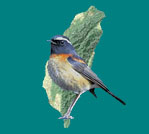|
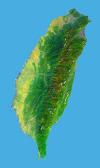
Photo
Credit: Government Information Office, Taiwan. |
TAIWAN: PAST AND PRESENT
The
island of Taiwan
was shaped by the collisions of the Eurasian continental plate and
the Pacific Ocean
plate several million years ago. Powerful forces have created
magnificent natural scenery: Alishan (Data Mountain; main peak),
2663 m (8,740 feet); Anmashan (Saddle Mountain Range), 2666 m
(8,752 feet); Hehuanshan (Harmonious Happiness Mountain), 3416 m
(11,215 feet); Yushan (Jade Mountain), at 3952 m (12,974 feet),
the highest peak in East Asia; the precipitous cliffs of Taroko
National Park, the coral cliffs of Kenting National Park in the
south; and the hot springs and fumaroles of Yangmingshan National
Park in the north. Taiwan's marine ecology, with coral reefs and
a variety of marine life, enriches the natural beauty of the
island.
Located in
Hualien
County on Taiwan’s east coast, Taroko Gorge is known for its sheer
marble cliffs, deep gorges, winding tunnels and the
Liwu
River, which flows through the landscape. This craggy land
originated over 230 million years ago, when coral reefs formed in
the tropical shallows where
Taiwan
is now situated. The passage of time changed the coral into
limestone, which the intense heat of geotectonic movements turned
into marble. The collision of continental plates millions of
years ago forced the rocks upward, creating Taiwan’s Central
Mountain Range. Wind stripped away the topsoil, exposing the rock
to erosion. The flow of the
Liwu
River brought about winding gorges, rapids, waterfalls, and
hollows in rock, which still bear the markings of the massive
tectonic movements that formed Taiwan.
Human habitation in Taiwan dates back 12,000 to 15,000 years, and
evidence suggests that the ancestors of today’s indigenous peoples
came from southern China and Austronesia. Han Chinese began
settling in the Pescadores (Penghu Islands) in the 1200s, but
Taiwan's hostile tribes and its lack of the trade resources valued
in that era rendered it unattractive to all but "occasional
adventurers or fishermen engaging in barter" until the sixteenth
century. Other early immigrants included the Hakka, a subgroup of
the Han.
Taiwan's modern
history goes back about 400 years, when, according to one story
(of several), Jan Huygen van Linschoten, a Dutch navigator on a
Portugese ship, exclaimed "Ilha
Formosa!"
(“Beautiful Island!”) on seeing Taiwan’s lush and dramatic east
coast. The island became known as Formosa; the name survived over
400 years and is still preferred by many.
In
1624, the Dutch East Indies Company, headquartered in Batavia (now
Jakarta), Java, Indonesia, established the first European-style
government on the soil of Taiwan, and inaugurated the modern
political history of Taiwan in the area of present-day Tainan city
on the island’s southwest coast. Today, the visible legacy of the
Dutch is limited to Anping Castle (formerly Fort Zeelandia) in
Anping, now Tainan’s suburb and port city. “Taoyuan” (today’s
Anping city) was the name the Dutch used for their settlement.
The origin of that name, with various spellings (Taoyuan, Taian,
Taiyan), is disputed. Some say that it was an aboriginal name
meaning “foreigners” or “aliens,” referring to the Chinese,
Japanese and Dutch who had arrived. Chinese adopted it as the
name for the whole island in the late 1600s. The standard name
“Taiwan” came into general use by westerners in the 1960s.
Taiwan is currently home and heir to the
political system of the Republic of China (ROC), which was created
in mainland China by Dr. Sun Yat-sen (1866–1925) in 1912 as the
first constitutional republic in Asia. The ROC Constitution
specifically guarantees the freedoms of speech, residence, travel,
assembly, confidential communication, religion and association.
Other rights and freedoms, even if not specified in the
Constitution, are still protected, so long as they do not violate
social order or public interest.
In 1949, the Communist Party of China defeated
the ROC government in a civil war and founded the People’s
Republic of
China on the
mainland. The ROC government, led by Chiang Kai-shek (1887–1975)
and the
Kuomintang (or Nationalist Party), was forced to retreat to
Taiwan, and its jurisdiction became limited to
Taiwan,
Penghu (Pescadores),
Kinmen (Quemoy),
Matsu (Matzu, Mazu), and the Pratas (Dongsha) Islands.
In 1987, the ROC lifted martial law and began a
series of democratizing reforms, winning widespread attention and
praise from the international community; these culminated in 1996
with the first ever direct election for president. In the 2000
presidential election, the Democratic Progressive Party emerged
victorious and took over power from the Kuomintang, which had
ruled
Taiwan for more than 50 years; Taiwan thereby reached the
milestone of a peaceful and democratic transfer of power between
political parties. In 2004 President Chen Shui-bian was
re-elected for a second term of office, further consolidating
Taiwan’s democratic transformation.
Moreover, even before democratization, the people
and government of
Taiwan had
created an “economic miracle,” which reached fruition in the
1980s. In 2002,
Taiwan
joined the World Trade Organization, formally taking its place in
the global economic and trade system. The current administration
in Taiwan is now moving to implement the “Challenge 2008” national
development plan and the “Ten New Major Infrastructure Projects.”
The most important aspects of these plans include aggressive
promotion of the knowledge-based economy, transformation and
upgrading of traditional industries, creation of new and better
job opportunities, expansion of social welfare, and vigorous
support for culture.
With its democratic political system, free market
economy, social pluralization, high levels of education, and
ever-more advanced technology,
Taiwan can now
rightfully be considered as one of the world’s developed nations.
By ensuring that development was balanced in the “golden triangle”
of economic development, social equality, and environmental
sustainability, the government has created a happy and healthy
nation.
Facts and
Figures
Taiwan island: Length:
394 km (244 miles) Width at widest point: 144 km (89
mi.) Total area: about 36,179 sq. km (about 14,000 sq.
mi.) Distance from Chinese mainland at closest point:
130 km (80 mi.) Average distance from Chinese mainland:
175 km (110 mi.)
“High mountains” over 1,000 meters (3,283 ft.) constitute
about 31% of the land area; hills and terraces between 100 m (328
ft.) and 1,000 m above sea level make up 38%; and alluvial plains
below 100 m, where most communities, farming activities and
industries are concentrated, account for the remaining 31%.
Taiwan’s most
prominent geographic feature is its 330 kilometer (205 mi.)
Central Mountain Range, which has more than 200 peaks over 3,000 m
(9,850 ft.) high.
Crossed by the Tropic of Cancer,
Taiwan has a
subtropical climate, except for the extreme southern tip, which is
tropical. Summers are long and humid; winters are short and
usually mild.
Taiwan has high
levels of endemism in both plants and animals. About 26% of
vascular plants, 25% of mammals, 10% of resident birds, 25% of
non-marine reptiles, and 33% of amphibians are endemic. In
addition, a number of Taiwan's plants, amphibians, and freshwater
fishes are relict species, meaning that Taiwan has served as a
refugium for ancestors of these species during glacial periods.
Upon the retreat of the ice sheets, the distribution of their
relatives shifted north or up into the Himalayan Mountains,
leaving them isolated on Taiwan. These populations survived in the
mountains of
Taiwan,
and eventually diverged from their ancestors, becoming unique
endemic species.
Taiwan has 15
generally accepted endemic bird species (some authorities say 17
to 19, or more) and more than 60 endemic subspecies. There are at
least 384 species of butterflies, of which about 12.5% are
endemic. Plant life is abundant and diverse, including low
elevation flora closely related to that found in southern China,
mountain flora similar to that of western
China,
and high alpine flora resembling that of the Himalayan region.
Native plant species account for about 40% of Taiwan’s total
vegetation.
Mandarin is the official language, but Taiwanese is widely
spoken. Taiwanese is a dialect of Minnan or Southern Min, the
language spoken in the south of
Fujian
Province
in China from which most Taiwanese trace their ancestry. Also,
Hakka is widely spoken in Hsinchu and
Miaoli
Counties.
There are currently 13 major indigenous groups, comprising
less than 2% of
Taiwan’s
total population of about 22 million. The population of the
Taipei-Keelung Greater Metropolitan Area is about 6.6 million.
The second most populous place is Kaohsiung city; Taichung city is
third.
Sources:
Government
Information Office,
Taipei
and Vancouver
Taiwan
Tourism Bureau
Jonathan
Manthorpe, Forbidden Nation, Palgrave MacMillan, 2005
Hotspots
Revisited,
http://www.biodiversityscience.org/publications/hotspots/Taiwan.html
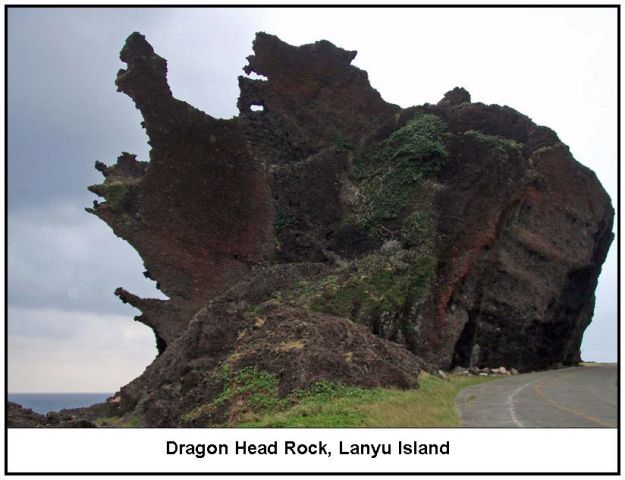
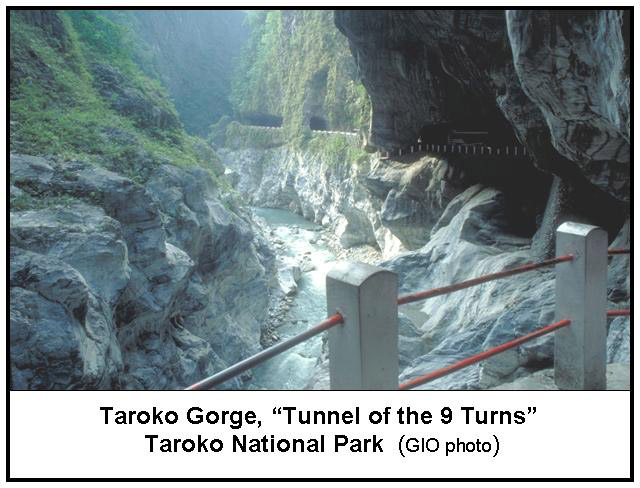
|
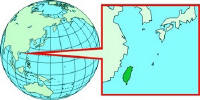
Photo
Credit: Government Information Office, Taiwan. |
